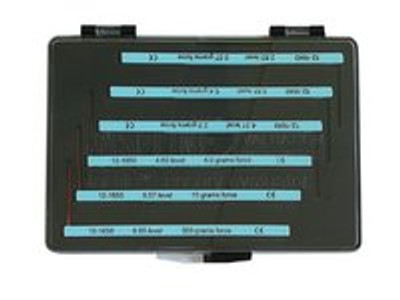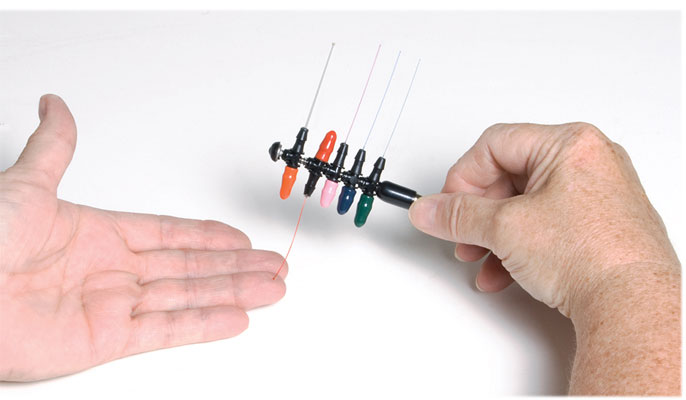 1st Jul 2015
1st Jul 2015
What are Monofilaments Used For?
Diabetes is an epidemic. A new report from the US Centers for Disease Control and Prevention shows that the number of Americans with diabetes continues to rise, with over 12% of the adult population estimated to have the disease and more than a third of those aged 20 and over in the US now thought to have prediabetes. Dr. Ann Allbright, director of the federal agency's Division of Diabetes Translation, National Center for Chronic Disease Prevention and Health Promotion described the new figures as "alarming,", and says they "underscore the need for an increased focus on reducing the burden of diabetes in our country. We simply can’t sustain the trajectory – the implications are far too great – for our families, our healthcare system, our workforce, our nation.” What this also means is we have over 29 million people here in the United States at risk for complications from Diabetes.
Looking for
monofilament tests used for evaluating diabetes and other conditions as described in this article?
Check out our product category for monofilaments and monofilament kits.
Foot Complications
I want to talk about foot problems because they are the most common complication that can arise from both Type 1 and Type 2 Diabetes. 1 in 4 people with Diabetes will develop a problem with their feet. Some of these complications are: peripheral neuropathy, vascular compromise, ulceration, and infection. These factors, often associated with trauma or foot deformity, lead to an increased risk of lower limb amputation and people with diabetes are 25 times more likely to lose a leg than people without the condition. I know I’m throwing a lot of numbers at you, but I do so because the statistics are staggering.
In many cases, foot ulceration can be prevented with appropriate healthcare and patient education. Patients with diabetes should have regular foot and footwear inspections.
These regular inspections are a patient’s first line of defense against foot complications.
Semmes Weinstein Monofilament Test
The Semmes-Weinstein 5.07 monofilament nylonwire exerts 10 g of force when bowed into a C shape against the skin for 1 second. Patients who can’t reliably detect application of the 5.07, 10-g monofilament to designated sites on the plantar surface of their feet are considered to have lost protective sensation in their feet.
Semmes Weinstein Monofilament Test Instructions
- Place the patient in supine or sitting position with shoes and socks removed.
- Touch the 5.07 monofilament wire to the patient’s skin on the arm or hand to demonstrate what the touch feels like.
- Instruct the patient to respond “Yes” each time he or she feels the pressure of the monofilament on the foot during the exam.
- Instruct the patient to close his or her eyes and keep toes pointing straight up during the exam.
- Hold the monofilament perpendicular to the patient’s foot. Press it against the foot, increasing the pressure until the monofilament bends into a C shape. (The patient should sense the monofilament by the time it bows.)
- Hold the monofilament in place for about 1 second. Press the monofilament to the skin so it buckles at one of two times as you say “Time one” or “Time two.” Have the patient identify at which time he or she was touched. Randomize the sequence of applying the filament throughout the examination.
- Locations for the test: use the first, third, and fifth metatarsal heads and plantar surface of the distal hallux and third toe of both feet. Avoid callused areas.
- Record response on foot screening form with “+” for Yes and “–” for No.
Keep in mind; neuropathy usually starts in the first and third toes and progresses to the first and third metatarsal heads. It’s likely that these areas will be the first to have negative results with the Semmes-Weinstein monofilament exam.
If the current trend continues, 1 in 3 Americans will have full blown Diabetes by 2050. That means a third of our population is at risk of developing complications that could lead to the loss of a limb. Remind patients then remind them again to be vigilant in their self-exams and keep their yearly Dr’s exam. Think of the monofilament test as the alarm system for your patient’s house.
For more information about Monofilaments and Diabetes Testing tools see ProHealthcareProducts.com







